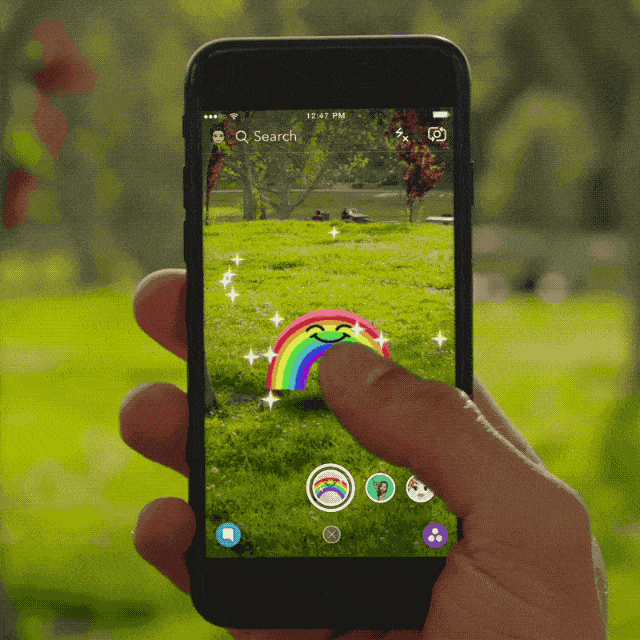“It’s a VR play. That’s the frothiest space in the Valley right now. Nobody understands it but everyone wants in. Any idiot could walk into a fucking room, utter the letters ‘V’ and ‘R’, and VC’s would hurl bricks of cash at them. By the time they find out it’s vaporware, it’s too late.”
T.J. Miller’s Erlich Bachman from HBO’s Silicon Valley isn’t necessarily known for his business prowess, but his assertion that virtual reality is a hotbed of hype right now in Silicon Valley is right — the real question is where it goes from here.
Virtual reality can and will continue to find a hold with gamers who don’t mind paying a premium, but recent developments surrounding smartphone augmented reality may make it more difficult for VR-makers to find traction amongst more casual consumers.
The augmented reality platforms shown off by Facebook with its Camera Effects and Snap with its World Lenses boast a physical world that can be shifted and changed in front of our eyes. Right now this is done in pretty trivial ways surrounding content creation, yet there are so many places that this can go based on what we currently know about how the internet interfaces with the physical world.

Someday you’ll be wearing something that will allow you to observe this augmented world at all times, but for the time being, the smartphone does a great job of capturing more situational use cases that fit in with mobile’s broader goal of delivering more localized, context-aware experiences.
The issue is that some of these situational, experiential moments were what mobile virtual reality was allegedly going to help us discover. VR was going to be the more imminent, consumer-accessible technology that preempted many of the headset AR use cases still a decade or so out, but the “magic window” into the world that you get when you hold your camera-equipped smartphone into the air may be all we really need until Magic Leap or Microsoft or Apple create the next device we all desperately need.
Gaming and VR video apps are definitely interesting, but may not be enough to drive sales of smartphone-based headsets like the Gear VR or Daydream View headsets.
Even as device manufacturers nail positional tracking on mobile, the use cases will deliver just as much to smartphone AR as they do to mobile VR. Google is building next-gen depth-sensing cameras into handsets through its Tango platform, while Apple reportedly has hundreds working on its own solution for phone-based AR.
https://twitter.com/lucas_matney/status/793438078467579905
Pulling a VR headset out of your backpack to check out a 3D model makes a lot less sense when you can just hold your phone up in the air and view something mapped onto a nearby tabletop.
Putting on a VR headset or opening an AR app then raising your hand are ultimately both deliberate choices, with one of those requiring a lot more effort (and a lot less social awareness) than the other. Some non-gaming use cases like social telepresence, data visualization, e-commerce and employee training will undoubtedly have more accessible solutions on smartphone AR, while other specialized verticals like medical therapy and CAD visualization aren’t meant for consumers, anyway.

Users high-five each other in the social app, AltspaceVR
The fidelity of virtual reality experiences will always be superior to what your smartphone can offer and will allow deeper levels of feeling immersed in whatever you’re doing. The world this matters most for is the one a few can-kicks down the road, where users are actually entering digital worlds where they are living through experiences in a supplementary way. Virtual reality is a tool enabling lifelike experiences, and that’s something the gaming industry is better suited to carry out than most.
Smartphone-based augmented reality is going to pick up steam in a major way over the next couple of years as the largest tech companies on the planet throw their full weight behind it. While virtual reality is sure to continue growing, the VR “killer apps” that many hoped would become evident soon may end up popping up on the camera-enabled smartphones that billions already have in their pockets.
